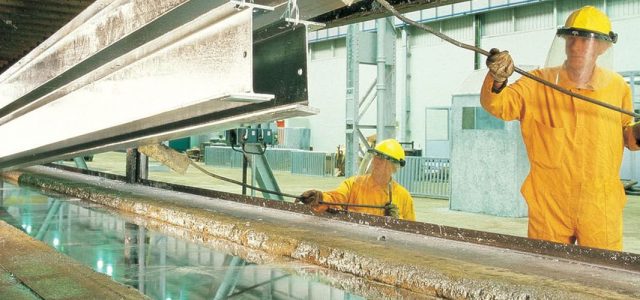Introduction
- Metal Preparation
- Dipping Phase into Molten Zinc
- Cooling, Finishing, and Drying
- Quality Control
Galvanized iron pipes are used for a lot of practical things, like moving water, farming, phone lines, and plumbing. Galvanized iron pipes can be used both inside and outside because they are strong and don’t rust. Do you ever wonder, though, how these things are made? Because they are galvanized, these steel pipes are very durable and are used in engineering and building projects all over the world. Today, we’ll talk about the same thing! Here’s a more detailed look at how galvanized iron pipes are made.
Metal Preparation
Before anything else, the surface of the iron pipes is cleaned and fixed up well. Before the base metal can be galvanized, it has to go through a number of steps. All of this is done to get the iron ready for the next step. Usually, this is how the outside of galvanized iron pipes is done:
The steel is first cleaned with a corrosive chemical solution that gets rid of all the dust, oil, and grease.
The chemical solution is then washed away by water, and the iron pipe is pickled. Pickling is a way to clean the surface of ferrous metals by getting rid of rust, scale, impurities, and stains.
Pickling the iron pipe in an acidic solution gets rid of the flaky surface of hot-rolled steel, also known as “mill scale.”
Once the pickling solution is gone, there will be no need to flux the iron pipe. Zinc ammonium chloride is often added to the base metal to stop the cleaned surface from oxidizing.
Dipping Phase into Molten Zinc
All of the steps in galvanising are important, but this step and its method are what make it so popular. The bath of molten zinc that surrounds the iron pipes is about 449 degrees Celsius (840 degrees Fahrenheit) hot. It will make a thick and long-lasting coating on the surface of the base metal here.
What does it do? Zinc is a compound that keeps water and oxygen from getting to the metal underneath. It also makes a big difference in how well the metal can resist rusting and corrosion. Zinc acts as a “sacrificial anode” when it rubs against the outside layer because of dust and friction.
Some producers add lead to the molten zinc bath to make it more fluid and to reduce the amount of zinc that gets on the dipped iron pipe. Also, it helps stop dross from floating.
Some companies may use cold-dipped galvanizing, in which the base metal is only painted with zinc-rich paint. But hot-dipped galvanizing is the method that is used most often right now. Since 1742, it has been shown that it gives metals a better, more durable, and no-maintenance coating.
Cooling, Finishing, and Drying
Now that the galvanized iron pipes have been dipped in zinc, they need to cool down. Galvanized iron pipes are usually cooled in a quench tank so that they can cool quickly and so that the coating doesn’t react with the environment in a way that isn’t what was planned.
Quality Control
Quality standards are strictly enforced for all goods that are made. Here, the requirements for the final product of the galvanized iron pipes are tested.
There is no one-size-fits-all quality control method for galvanized iron pipes because each manufacturer uses a different method and set of procedures to make sure the pipes are of the right quality and meet the standards.
Read More :
Chart of Low-Alloy Steel Grades: When the amount of Ni, Cr, Mo, and other alloying elements is less than 10.5%, the steel is called low alloy steel. Low alloy steels range from steels with small amounts of chrome and nickel to 11/13Cr steels with 4% nickel.
Steel production-linked incentive: The deadline for submitting an application for the PLI is likely to be extended once more: As a result, instead of 2023-24, as suggested in the scheme guideline released in October, the scheme’s incentives would be released in 2024-25.

